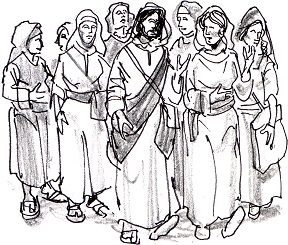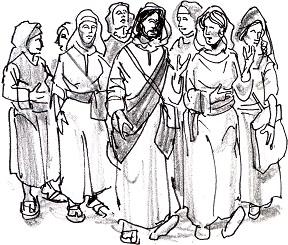

“Accompanying Jesus were the Twelve and some women” (Luke 8:2).
1 Tim 6:2c-12; Luke 8:1-3
Luke describes the entourage surrounding Jesus as the Twelve and “some women.” Considering the role that women played as sole witnesses to both the death and resurrection of Jesus, it would seem impossible to exclude them. When Luke’s Gospel was being composed some 50 years later, the tradition of the women disciples was too well established to be left out. But this did not mean that cultural and ecclesial forces were not intent on excluding them.
The effort to diminish their importance seems evident in what was perhaps a later scribal insertion to explain that these women were recovering sinners or cured of illnesses, or only present as benefactors to the ministry. It concedes that one was important because of her husband, a high official, but that the notorious Magdalene was there because she had been cured of demonic possession. This smear was repeated over time to head off any dangerous memory about Jesus’ radical and counter cultural inclusion of women.
Luke, however, names Mary of Magdala, Joanna and Susanna just as he named the Apostles, and he places them in the company of Jesus as he traveled “from one town and village to another preaching and proclaiming the Good News of the Reign of God.” Luke’s connection to Paul suggests that he had no reservations about the many women who headed house churches or were partners with Paul in ministry. The resistance to women as equal partners with men in the church got an early start that continues today in the bureaucratic foot dragging over accepting the evidence of women deacons in the early church.
Theological arguments aside, the church has historically been blinkered by cultural assumptions about the inferiority of women. This stance may have survived as normative up until the second half of the Twentieth Century, but since then the church has been left behind by most global institutions. It is still defending an all-male model of governance that has stymied evangelization and deprived it of the credibility it might have had as the vanguard of justice for women.
Evil spirits and infirmities still abound, but evidence suggests they are not mainly entrenched in the movements toward greater equality for women.
Advertisement








